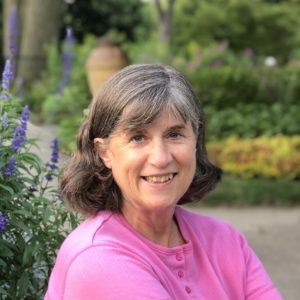Entrepreneur blood runs in my family. Sons of immigrant farmers, my grandfather and his brother went from rags to riches in the automobile business in the 1920s, creating a prosperous family legacy.
In contrast, I harbored a muse. I had a story in me, but didn’t know which one.
Nevertheless, I went practical and chose an education major. As a teacher-in-training, I had goals, schedules, lesson plans, objectives, and deadlines. With the ambition of my ancestors, I pulled all-nighters writing papers and studying for exams. Armed with innovative lesson plans and newfound skills, I planned to build a career out of shaping the next generation–future builders, engineers, and entrepreneurs, the shakers and movers. America, Land of Opportunity, where people chased the American Dream. Like my grandpa did.
One of my goals was a cross-cultural experience: a month in Madison County, North Carolina to teach in the mountain schools with fellow education students.
Turns out I was the one with lessons to learn.
Enter Mr. Woody. He lived forty percent of his life covered in sawdust. He spent half the week in the forest seeking the right wood–the way his family did for generations. His chairs were so solid he could balance each on one leg with all of his weight on it. No doubt he could make a fortune with his chair-building skills.
Yet he couldn’t tell you how long it took to make one. Or five. Or ten.
Meet the blacksmith who never advertised. Though he was booked solid with orders, he took his time with twenty-two college kids. He demonstrated how to forge a fanciful leaf from a hunk of iron, then preached a sermon from Revelation 2 about how the attributes of iron compared to Christ and the rod of iron He’d use to rule His future kingdom.
Though blacksmithing provided a livelihood, his lifeblood wasn’t from any exchange of money. It came from the instruments of his trade, and the personal exchanges between him and anybody who entered his shop.
To put it in mountain terms, Mr. Woody and the blacksmith cared no more for money than a crow cared for a holiday.
We students also learned mountain clogging, loitered at the general store playing checkers, hiked the Appalachian trail, and were captivated by the storytelling magic of Richard Chase, resident folklorist. People there created meaningful lives by a route much different than those seeking the prosperity of the American Dream. Even with humble surroundings, meager possessions, and simple goals, these folks enjoyed rich lives without money–no fancy homes, expensive cars, or Caribbean cruises. But they were wealthy with things they could never lose: a richness in spirit, a deep contentment, a joy in daily life, work, and family.
I found a story I was meant to write. My muse rejoiced.
Back at college, I wrote a fictional short story based on my southern Appalachian experience and submitted it to a contest. It won first place.
I tucked the tale away but it wouldn’t rest in peace. Memories of the people and their Appalachian hills beckoned me to revisit their towns and hollows, daring me to dig deeper into their lives. Years later, I resurrected the story.
Questions probed. How would a clash of traditional values and progressive ideas impact a small town? Did living in two worlds always result in belonging to neither? What if two worlds collided? The one I was from and the one I’d discovered.
I embarked on a novel, fueled the way Mr. Woody was impassioned by his chairs and the blacksmith by his forge.
After years of researching, writing, and obtaining critiques (in my spare time between work and parenting), All That Is Hidden was born. I consider it my fifth child. And it’s a small way I can repay the folks of Appalachia for what they gave to me.
 Are secrets worth the price they cost to keep? Ten-year-old Tina Hamilton finds out the hard way.
Are secrets worth the price they cost to keep? Ten-year-old Tina Hamilton finds out the hard way.
She always knew her father had a secret. But all of God’s earth to Tina are the streams for fishing, the fields for romping, a world snugly enclosed by the blue-misted Smokies. Nothing ever changed.
Until the summer of 1968. Trouble erupts when northern exploitation threatens her tiny southern Appalachian town. Some folks blame the trouble on progress, some blame the space race and men meddling with the moon’s cycles, and some blame Tina’s father.
A past he has hidden catches up to him as his secret settles in like an unwelcome guest. The clash of progressive ideas and small town values escalate the collision of a father’s past and present.
Purchase here.
 Laura DeNooyer, a Calvin College alumni, thrives on creativity and encouraging it in others. She teaches writing in SE Wisconsin. She and her husband raised four children as she penned her first novel, All That Is Hidden. An award-winning author of heart-warming historical and contemporary fiction, she is president of her American Christian Fiction Writers chapter. Her new Standout Stories blog features novel reviews and author interviews. Visit her on her website.
Laura DeNooyer, a Calvin College alumni, thrives on creativity and encouraging it in others. She teaches writing in SE Wisconsin. She and her husband raised four children as she penned her first novel, All That Is Hidden. An award-winning author of heart-warming historical and contemporary fiction, she is president of her American Christian Fiction Writers chapter. Her new Standout Stories blog features novel reviews and author interviews. Visit her on her website.

Life can teach us so many lessons, but we have to be open to learning them. It’s most interesting when an author like Laura can turn the lessons she’s learned and the twists and turns of life, and interpret them into a novel. I’m looking forward to reading All That Is Hidden.